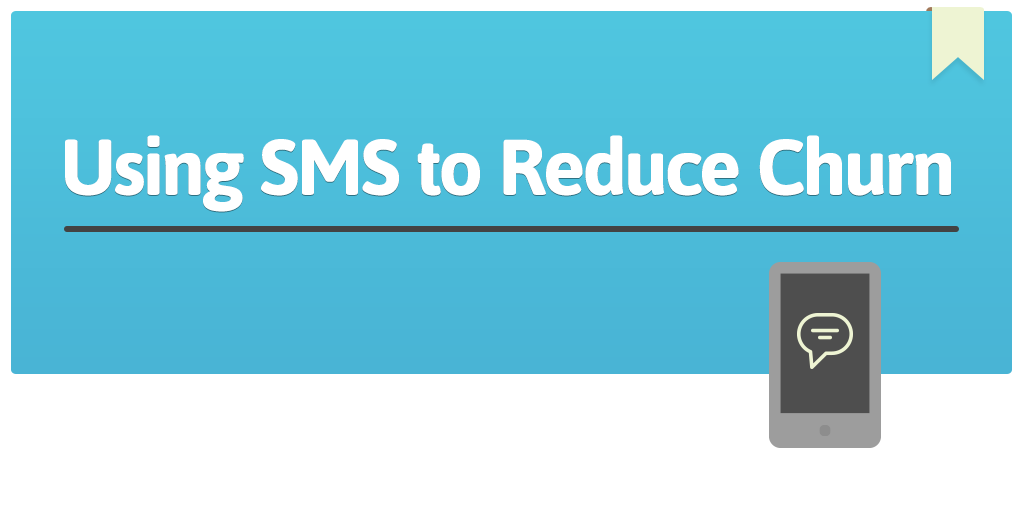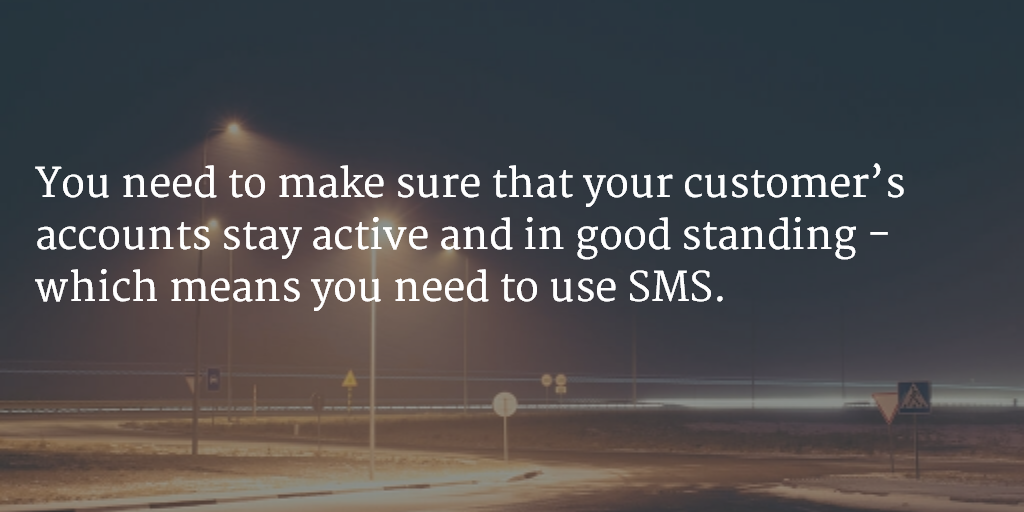As you fight the battle to reduce customer churn, your competitors are doing the same thing – no one wants to be left in the dust. With such a competitive environment, there’s an escalating arms race of tools that will keep customers subscribed and happy. The basic toolkit for every company are emails, an on-screen live chat system, and periodic user interviews. To take it to the next level you need to make sure that your customer’s accounts stay active and in good standing – which means you need to use SMS.
There is no single correct way to use SMS to reduce churn, but there are key principles that you can apply to any SMS campaign to increase its chance of success.
Opt-In Only
The most critical part of any company using SMS is that they only send messages to people who have explicitly opted-in to the messages. That’s why when you ask for their phone number during sign up you should make sure there’s an option for them to check that gives you permission to send them messages.
It’s important not to underestimate the importance of this. Not only do you want to avoid a reputation for spamming people, but if you have high unsubscribe rates from customers there are SMS providers that will investigate your accounts. It’s better to avoid the entire problem and simply follow the golden rule here: SMS others as you would want to be SMS’d.
Smart Targeting
The short and informal nature of SMS makes it an incredibly personal form of communication. This attribute is compounded by the fact that people are receiving these messages on a device in their pocket or purse. Because of this, you need to make sure that your messages are personally targeted to small groups of people. It’s not wise to send the same SMS to every single customer at the same time: instead, each individual and customer segment should have specially-tailored campaigns designed around their unique needs.
This is particularly useful when running campaigns to reduce customer churn. If a customer has cancelled their account, sending a boilerplate message about how great your tool is won’t yield a great return. Instead, try sending them a message that includes information specifically about their account and usage. These types of messages take a bit of extra setup depending on the tools you use, but immediately pay off.
Helpfulness and Utility
While it may be tempting to only send messages when you have a clear business need, it’s also important to build a reputation with your customers based on providing real value. This means sharing tips with them, informing them of time-sensitive offers, and making sure they recognize who you are when you send them a business-critical message.
This upfront effort of building your brand over SMS pays big dividends when your customers are churning. After establishing credibility, when you send a message to your customer requesting they update their billing information, they’ll be much more likely to pay attention.
Make It Personable
Every message you send should start by reminding them who it’s from and should take on a conversational tone. While you do have permission to text your customers that doesn’t necessarily mean you should expect them to add your number to their address book, let alone their Favorites list. Faced with this reality, it’s important to treat every message as if they’re going to be entirely bewildered with who they’re getting messages from.
In addition to making sure they know who you are, making it personal also allows your messages to stand out. Most people have received messages from large companies and telecom carriers that are filled with codes and disclaimers – unsurprisingly, these messages are immediately ignored. If you want to make sure that the messages you’re sending to people motivate them to reactivate their account, you need to be personable.
Optimize for Mobile
Being aware of the channels you’re using to communicate with customers is essential. If you treat SMS like a shortened form of email, you’ll be in for a brutal wake-up call when your click-through rates are close to zero. That’s why every link you include needs to point to a mobile-optimized page, why every message needs to be carefully crafted for brevity, and why sending messages at 2am might not be the best idea.
Once you begin to optimize for mobile, you’ll see your response rate increase. This is true for all users, but especially so for customers that have account management or billing issues. Oftentimes, companies will ignore that people want to update their credit card information on their phones. This leads to forms that only work on desktops, which is entirely useless when you’re using SMS to entice them to reactivate their accounts. To avoid this fate, take the surer route and optimize for mobile.
Call to Action
A great litmus test for whether or not you should send a message to a customer is whether or not there’s a clear call-to-action that you’re asking them to perform. If there is, that’s great – it’s essential. If there isn’t – watch out. Without a clear call-to-action, your customer’s reaction won’t be “this is great, thanks!” but, “why did I get this? Unsubscribe.”
The solution to this conundrum is simple: include a call-to-action. This can be anything from including a link and asking customers to click on it, to asking customers a question and prompting them to reply to your text. Feel free to get creative with the specific call-to-action, but don’t get so creative that you leave one out.
The End Result
If you follow all of these best practices, from making sure that your messages are personal to optimizing for mobile and including a clear call to action, you’ll begin to see an uptick in the effectiveness of your re-engagement campaigns. In addition, once these best practices are in place, you’ll be free to experiment more and test innovative new ideas built on top of a strong SMS foundation.


